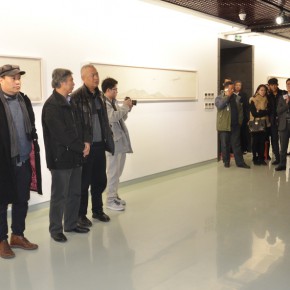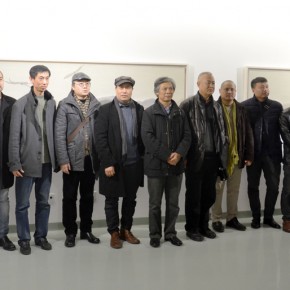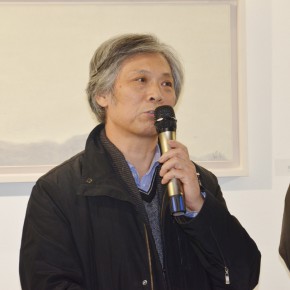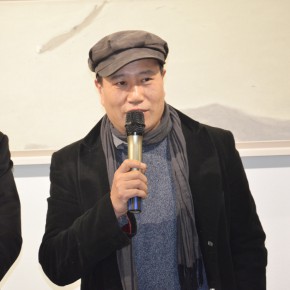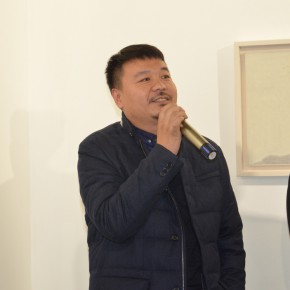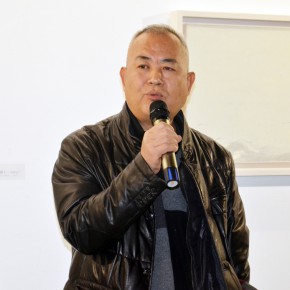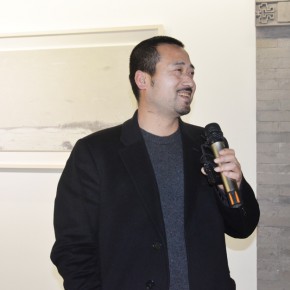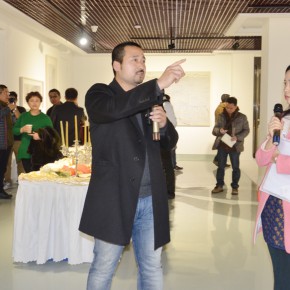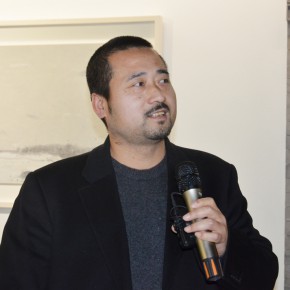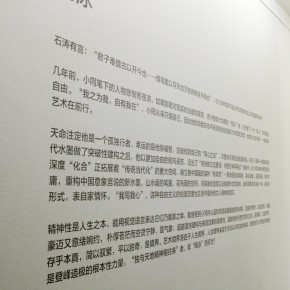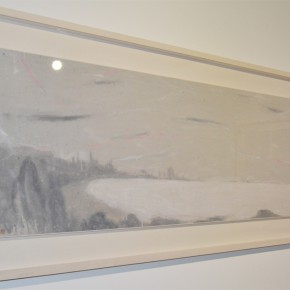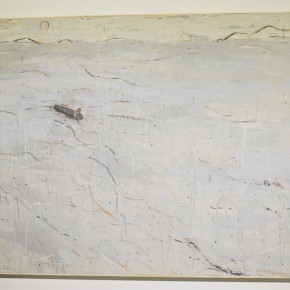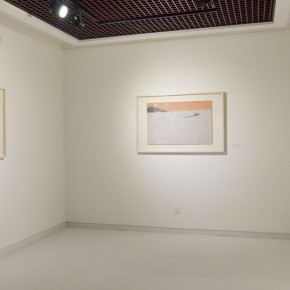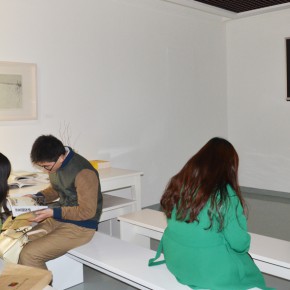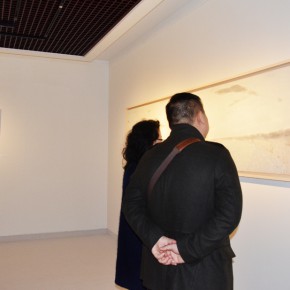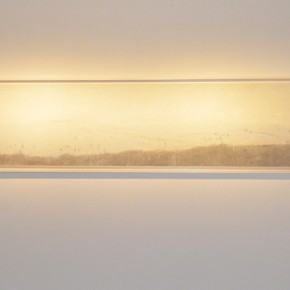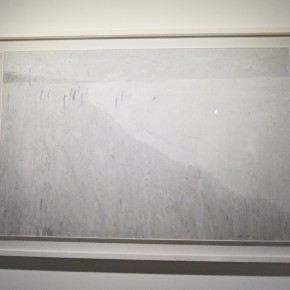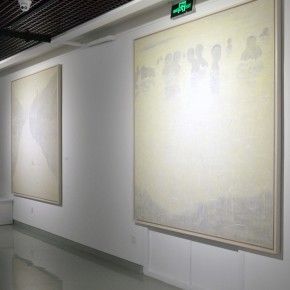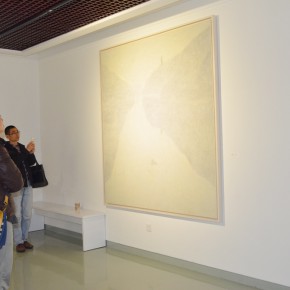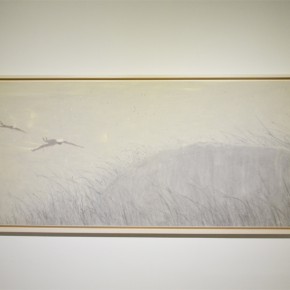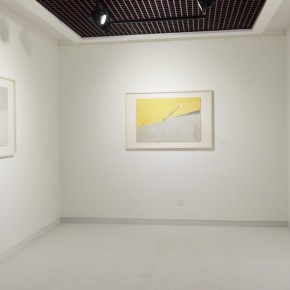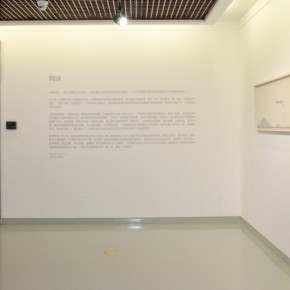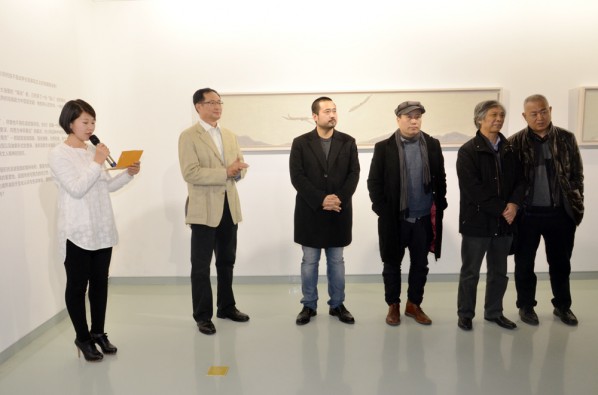
On the afternoonof December 14, 2014, hosted by the Rightview Art Museum, organized by Beijing Shaosong Culture & Art Co., Ltd, “Edify - 2014 Du Xiaotong’s Work Observing Exhibition” grandly opened at Beijing Rightview Art Museum. Tang Yongli, Dean of the School of Chinese Painting, CAFA, Professor Liu Qinghe from the School of Chinese Painting, CAFA, Liu Jinan, Dean of the College of Fine Arts, Capital Normal University, Sun Zhizhong, Director of Rightview Art Museum, artist Yuan Xiuping of the Qi She Arts and other honored guests were present at the opening ceremony. This exhibition is the first solo exhibition of the artist Du Xiaotong, and a concentrated reflection of his artistic exploration in recent years. It was entitled “Observing Exhibition”, as Du Xiaotong humbly said, he had intended to realize the purposes of self-examination, communication and criticism through this process.
Natural Landscape of the “Silence, Realm, Cleanness”
The theme of the exhibition “Edify” is originated from the “Record of the drawing language of the Kugua Monk(Shi Tao)”, Shi Tao of the Qing Dynasty said, “Borrowing brush and ink to draw the universe allows me to edify my sentiment”. From ancient times, the literati and poets unrestrictedly expressed their feelings with the use of brush and ink, thus “edify” is not only a kind of attitude to life, but also an extremely free, relaxed and sublimated mentality, revealing the literati spirit that uses the heart to draw and uses drawing to entertain the heart. Du Xiaotong said, the setting of the theme, on the one hand, it reflected his understanding of ink, and also corresponded with the subject often appearing in his works –swimming. But in the work of Du Xiaotong, “swimming” does not only showcase a pure form of exercise, instead, “that is a way to express the self temperament.”
Throughout the exhibition hall which is divided into several parts according to the time and style of the creations, it features some of the representatives of recent years and more than 50 new works created in 2014. It is worth mentioning that the artist also offers the manuscripts of his thinking process to the discussion. Du Xiaotong said, “These ideas and screens directly reflect the emotion without any disguise.”He honestly said that his painting creation directly starts from the idea, “constantly adjusting the color would also present the bright feeling of ink itself, to keep the language and material characteristics of ink itself.”
In the new creation in recent years, it is obvious that the shape of character that was once focused by the artist gradually becomes smaller, instead a large wide scene, the sharp obscure lines are hiding in the vast unity, the screen is more introverted, and the audience can see the clue from several red strokes that suddenly appear in the whole grey tone. Du Xiaotong explained the change of his style, “Since 2007 I started to paint a lot of human bodies, and had a stronger desire for the performance of the screen at that time, focusing on the rethinking of the human body. But then I began to find it did not correspond to tradition, but from my heart, I still looked forward to traditional culture, I believe that it is necessary for people to contact nature, society and the surrounding environment, giving the character value in the environment. It takes a long time to explore and think about – how to combine character and environment? What kind of environment is it combined with? After trying a large number of traditional symbols, I eventually choose the more realistic state, which is the present appearance.” Perhaps it is on the basis of this continuous trial and thinking, the artist finds an inner balance, the realm of the unity of nature and man. Tang Yongli said, “He uses a calm state of mind to pursue art, and finds the most fundamental form of artistic performance.He finds himself and the direction of development from the painting.”
Integrating Road of a Modernized Tradition
How do we see tradition, Du Xiaotong has his own thought, “Tradition is not a style, but a kind of thinking method, it is extremely important to discover more valuable contentsin traditional culture in the contemporary context.” Liu Jinan commented that, “Using both Chinese and Western artistic expressions, Du Xiaotong has reached a certain height, in line with the development trend of contemporary Chinese ink painting.”
As Sun Zhizhong, Director of Rightview Art Museum said, on the basis of the breakthrough construction of modern ink painting created by the first generation of elite artists born in the 1950s and the 1960s, Du Xiaotong had a more free attitude, developing “more deeply based on tradition, and farther stretched out his hand to the West”, his bridging China and the Westis more like a “chemical reaction”, to expand a bigger space for traditional evolution, looking for more answers for the“modernized tradition”, to establish a “new normality” in Chinese painting.
Text and photo by Lin Jiabin/CAFA ART INFO
Translated by Chen Peihua and edited by Sue/CAFA ART INFO


